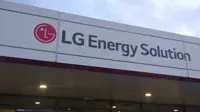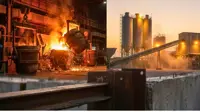The proposed amendments to the Insolvency and Bankruptcy Code (IBC) approved by the union cabinet will make decision-making faster, while ensuring that secured financial creditors get their due, which is also the purpose for which the insolvency Act was enacted.
The amendments are aimed at speeding up the bankruptcy resolution process that has been mired in litigation and correcting anomalies that have crept into its functioning since the law came into force in 2016.
This will particularly help bankrupt Essar Steel’s creditor banks led by State Bank of India (SBI) to challenge the insolvency judges’ ruling that Essar creditors whose claims are backed by collateral won’t get preferential treatment.
The NCLAT recently ruled that creditors whose claims are backed by collateral won’t get preferential treatment in the Rs42,000-crore resolution of Essar’s insolvency, putting unsecured creditors on par with secured creditors.
Under an agreement with the Essar creditors’ committee, ArcelorMittal’s offer would have secured financial lenders more than 90 per cent of their money. While that’s a good recovery rate, it’s less than 100 per cent, meaning unsecured operational lenders should have to go empty-handed.
In the insolvency judges’ view, however, the committee has no role to play in distributing the sale proceeds. While collateral gives seniority in a liquidation, everyone’s equal in a bankruptcy resolution.
Banks are annoyed with the National Company Law Appellate Tribunal’s (NCLAT) decision to rank financial creditors and business creditors on par, which, they say, will defeat the very purpose of the Indian Bankruptcy Code and the insolvency Act.
The NCLAT judgment can badly damage India’s debt market, they say, adding that unless the NCLAT ruling is quashed, credit costs for India Inc will surge, shares of state-run banks will swoon and foreign investors will flee, they say.
Banks claim that they are accepting a lower rate of interest than unsecured creditors only because the loans are backed by collateral; the lender expects to be paid first out of bankruptcy proceeds, leaving the remaining, if any, to unsecured creditors.
This cannot be a solution for the over Rs14,00,000-crore distressed assets accumulated by state-run banks in the country, they content.






















